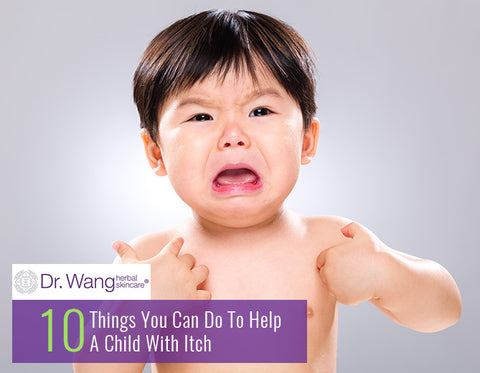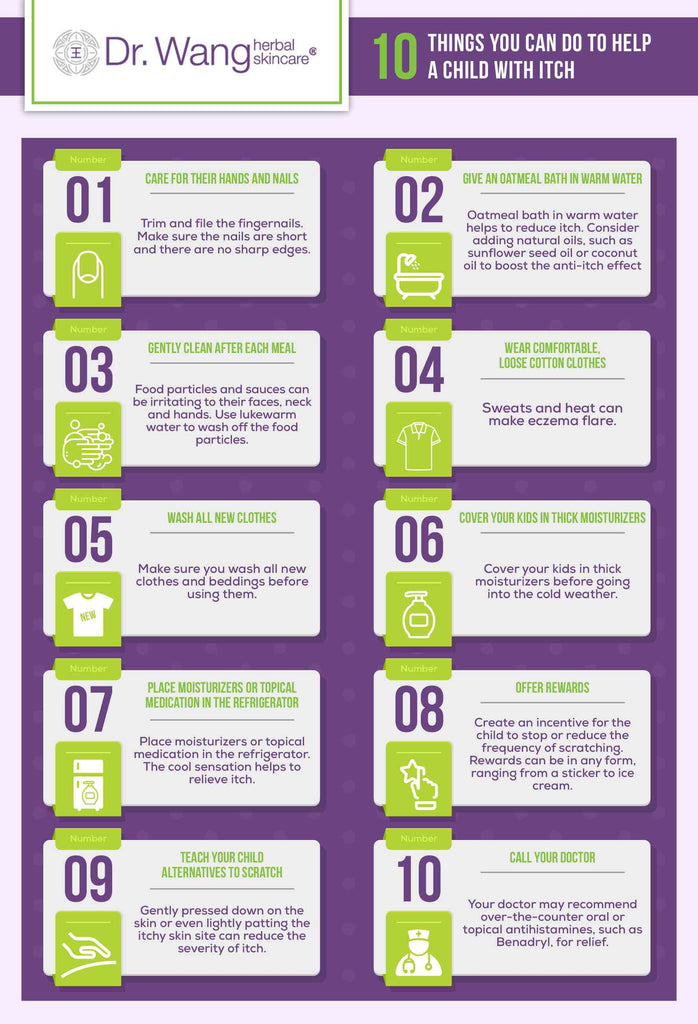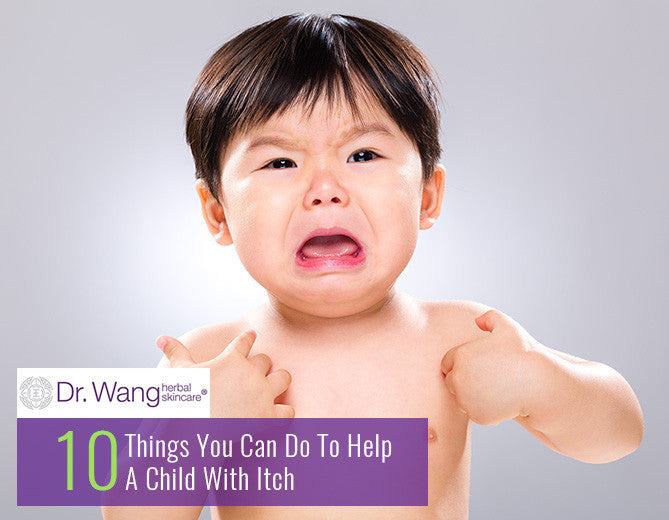
Dealing with a severe itch can be very challenging. What is even more difficult is watching your own child with itchy skin problems, such as eczema, trying to cope with bouts of severe itch. Often time, it can be really disheartening.
For most kids, they only want to find a way to stop the maddening discomfort. So, they scratch and scratch until the skin starts to bleed and break open.
To make matter worse, the subsequent scratch breaks the skin barrier, which leads to the entry of allergens, chemicals, and irritants into the skin.
Worst of all, pathogens such as bacteria, viruses or fungi, now have an entry into the skin causing infection. To fight off the pathogens and irritants, the body mounts an inflammatory response to the skin, which can worsen the itch sensation.
For parents caring for children with eczema, it can be really difficult and heart wrenching. You cannot rationalize with children about the need to avoid scratching, because they are too young to understand.
Furthermore, young children may not have the coping mechanism needed to restrain from scratching. Then again, itch can be tough even for adults to handle.
What can you do to help your children?
Here are 10 things you can do to help a child with the itch:
1. Care for their hands and nails
-Trim and file the fingernails. Make sure the nails are short and there are no sharp edges. If they have to scratch, only the fingertips are in contact with the skin, not the nails. This can help prevent or reduce the damage to skin, in case they start to scratch.
-Give your child something to play with during the day to occupy their hands. Toy cars, Barbie dolls, small balls or any hand toys can keep their hands busy. This will reduce the chance for them to scratch their skin.
-Consider giving your child cotton gloves or socks to wear on hands at night. Make sure those articles of clothing do not slip off during the night. Your child may still rub his or her face with these protections at night. Make sure the texture and the outer surface of the gloves and socks are soft and smooth.
2. Give an oatmeal bath in warm water.
If you don’t like oatmeal, consider adding natural oils, such as sunflower seed oil or coconut oil. The bath should be approximately 15 to 20 minutes. After the bath, pat the skin dry and leave a small amount of water on the skin. Do not rub the skin with the towel. Immediately apply moisturizer to cover the whole body. The moisturizer helps to seal in all the water on the skin.
3. Gently clean the face after each meal.
Food particles and sauces can be irritating to their faces, neck and hands. Use lukewarm water to wash off the food particles. You may or may not need gentle soap (e.g., Dove). Remember no harsh soap. They can irritate the skin more. Some parents even coat the faces and hands of young toddlers with moisturizers before meals.
4. Wear comfortable, loose cotton clothes. Sweats and heat can make eczema flare.
5. Make sure you wash all new clothes and beddings before using them.
6. Cover your kids with thick moisturizers before going into the cold weather.
7. Place moisturizers or topical medication in the refrigerator. The cool sensation helps to relieve the itch.
8. Offer rewards.
For some older children, you can create an incentive for the child to stop or reduce the frequency of scratching. Rewards can be in any form, ranging from a sticker to ice cream. Some parents even create games. They give their child a small star to be placed on a sticker chart for each time the child successfully fought off the urge to itch.
9. Teach your child alternatives to scratch.
Other motions such as clenching fists, gently pressed down on the skin or even lightly patting the itchy skin site can reduce the severity of itch. Teach your child to apply moisturizers and cool compresses whenever they start to itch.
10. Call your doctor for help.
Your doctor can recommend over-the-counter oral or topical antihistamines, such as Benadryl, for relief. The doctor may even prescribe a stronger medication for comfort relief.

Other Habits to Watch For:
It is not uncommon for children to develop an unconscious habit of scratching their skin even when it is not itching initially. Sometimes, when a child is sitting and watching TV, he or she may start scratch the skin. Soon, it triggers the itch-and-scratch cycle.
Final Thoughts:
We hope these tips are helpful. Please let us know if you have ever tried any of the tips. How effective were they on your kids? Let us know if you have some other good ideas to share.
Read This Next Article for tips to prevent and treat winter itch




